WILDER NATIVES
SPLENDID SOLIDAGOS
Solidagos are caterpillar kings; in his list of herbaceous native plants compiled by famed entomologist Doug Tallemy, the Solidago family sits at the top for supporting species of Lepidoptera (butterflies, skippers, and moths). And no, they don’t cause hay fever! Their pollen is far too heavy to be airborne, and needs to be carted around by bees. Here at Judges Farm, at the mouth of the mighty Connecticut River, we’re committed to offering as many wild-grown local ecotype goldenrods as we can find and responsibly collect here in New London County. So far, we’ve amassed thirteen separate species, and here they are in alphabetical order…
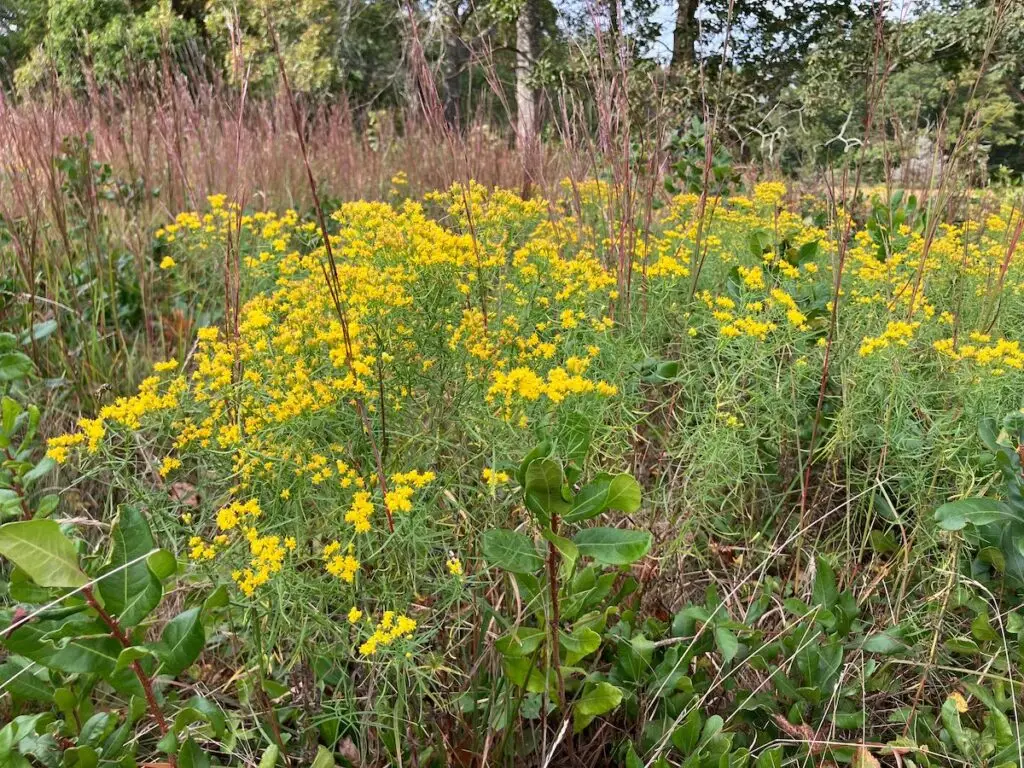
Euthamia caroliniana: Slender Goldentop
What an absolute joy to round the bend on a sunny September trail, and encounter a native tapestry anchored by this showy standout! Slender goldentop grows to just 15-18” tall, prefers full sun, and moist to medium, well-drained soils. It happily weaves its way through grasses, lowbush blueberry, and bayberry, and explodes with golden color in early fall. Rarely seen in today’s garden, but everyone should have some! Spreads slowly by seed and rhizomes.
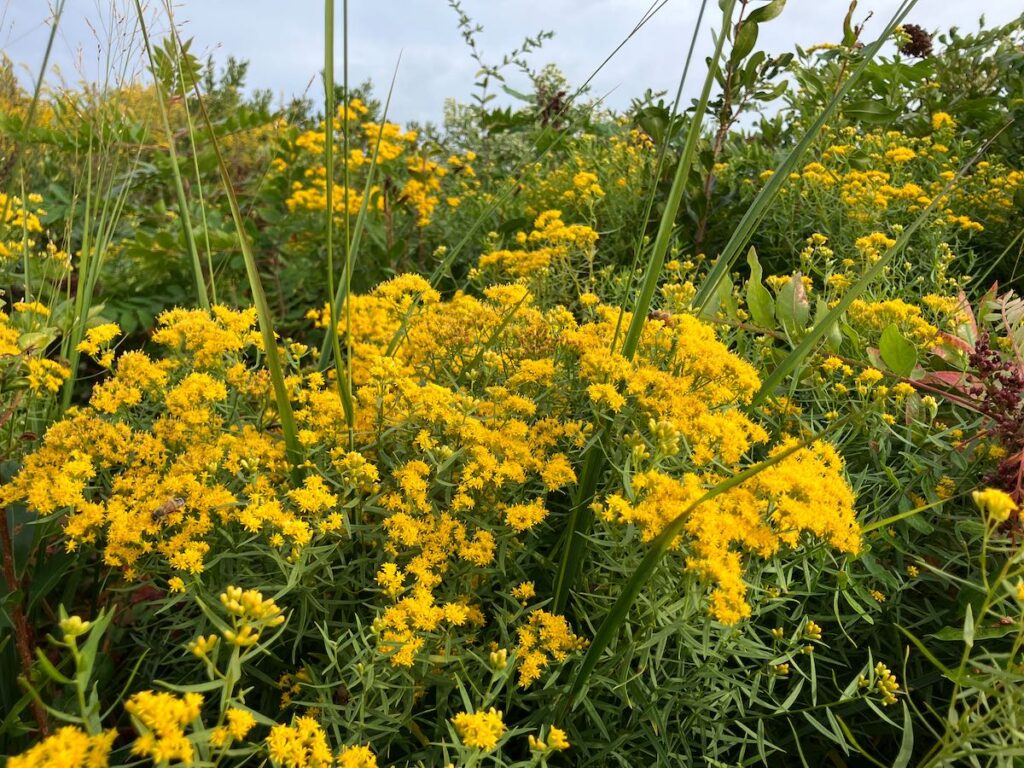
Euthamia graminifolia: Grass-leaved Goldenrod
If you’ve ever had the pleasure of walking the Rodman’s Hollow trail on Block Island on a crisp September Day, then you know. By only mowing once per year in wintertime, the Conservancy has allowed grass-leaved goldenrod to colonize these rolling seaside meadows. The result is a desperately gorgeous fairytale flowing blanket of gold.
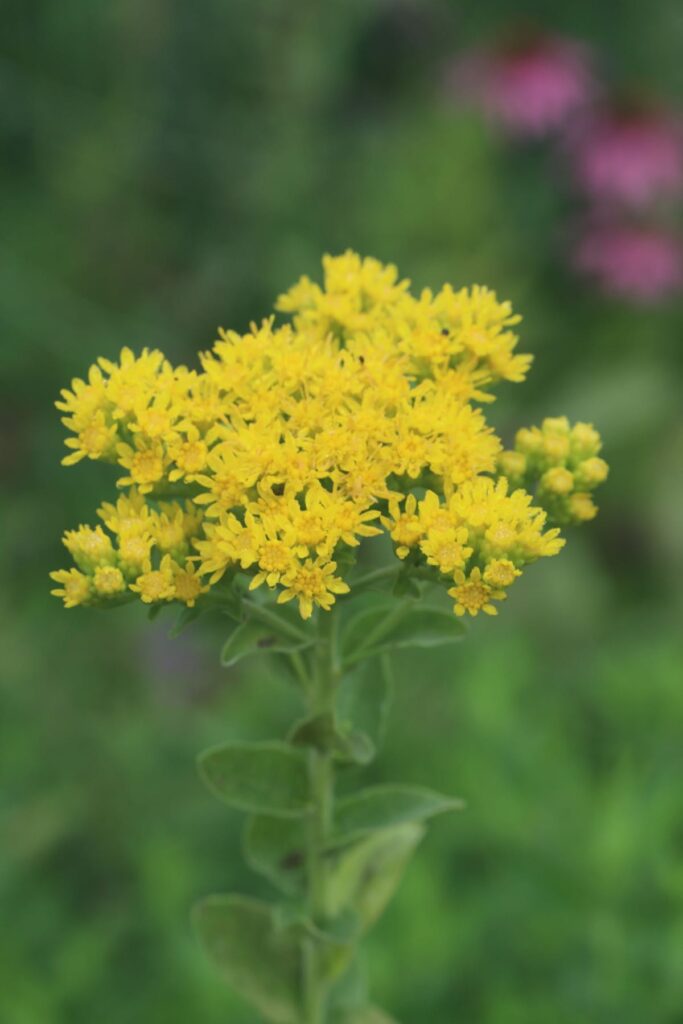
Oligoneuron rigidum: Stiff Goldenrod
The taxonomists just got busy with this one, and created a new genus for stiff goldenrod. Yay! The plants don’t seem to mind however, as they reach 3-5’ tall, and form sturdy colonies in a sunny well-drained spot. Stiff goldenrod has unique leathery ovate foliage, and showy roundish bloom clusters in late summer.
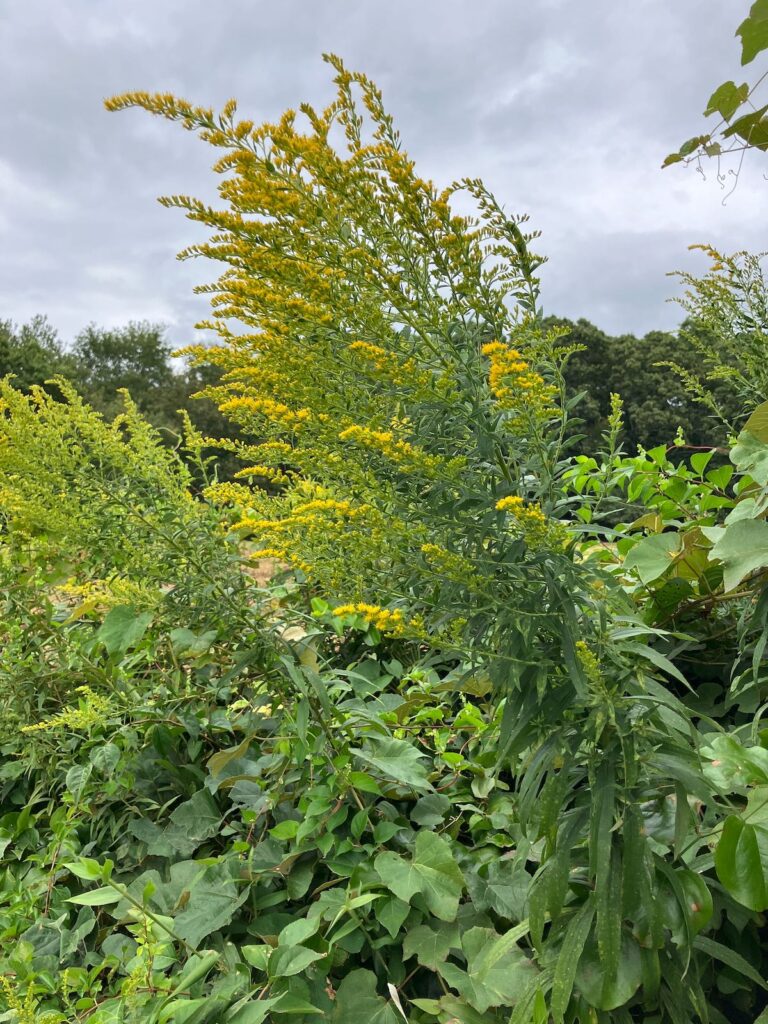
Solidago altissima: Tall Goldenrod
These often single-stemmed monsters can reach 8’ tall, so not for the small garden or faint of heart. Tall goldenrod makes a terrific back of the garden accent plant, and would combine beautifully with the purple button blooms of New York ironweed. Full sun, average soils, just not too dry.
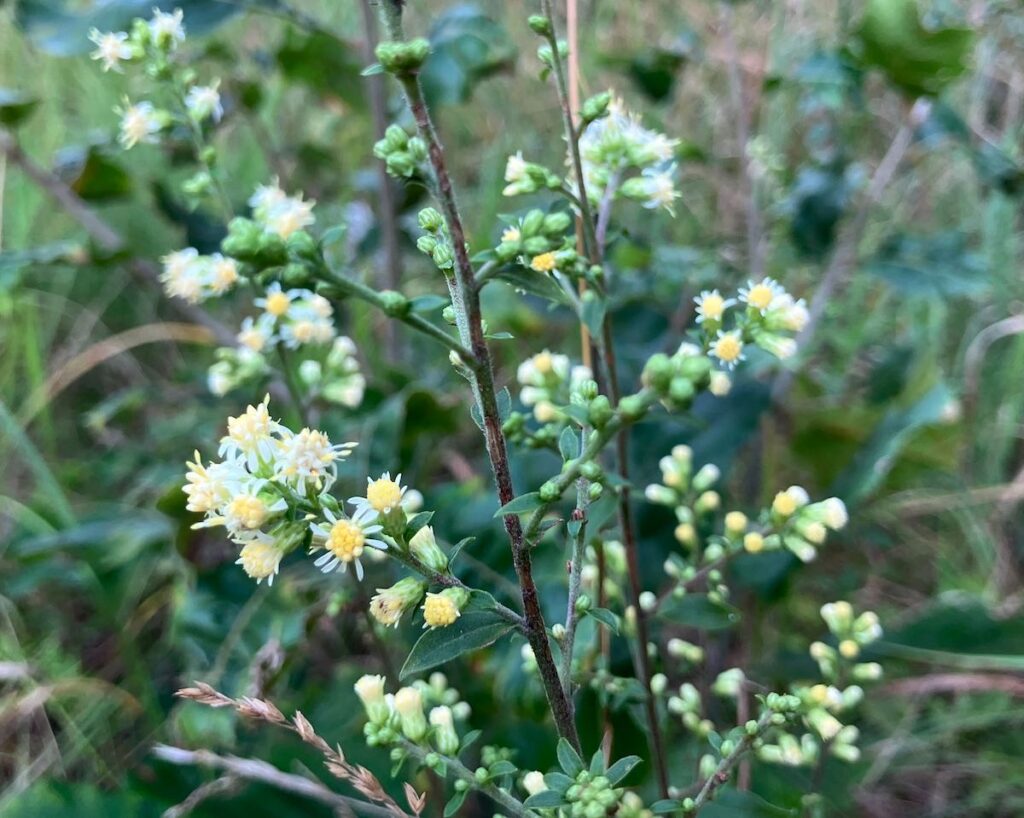
Solidago bicolor: Silverrod
Not a big yellow fan!? No worries, there’s a more delicate white blooming selection for you and your pollinators. Silverrod reaches just 2-3’ tall in the garden, loves full sun, and can take very dry summer conditions. We found this plant studding the hot rocky south-facing cliff cuts along rte. 395, where it was perfectly happy clinging to zero topsoil. Incredible adaptability from this beauty!
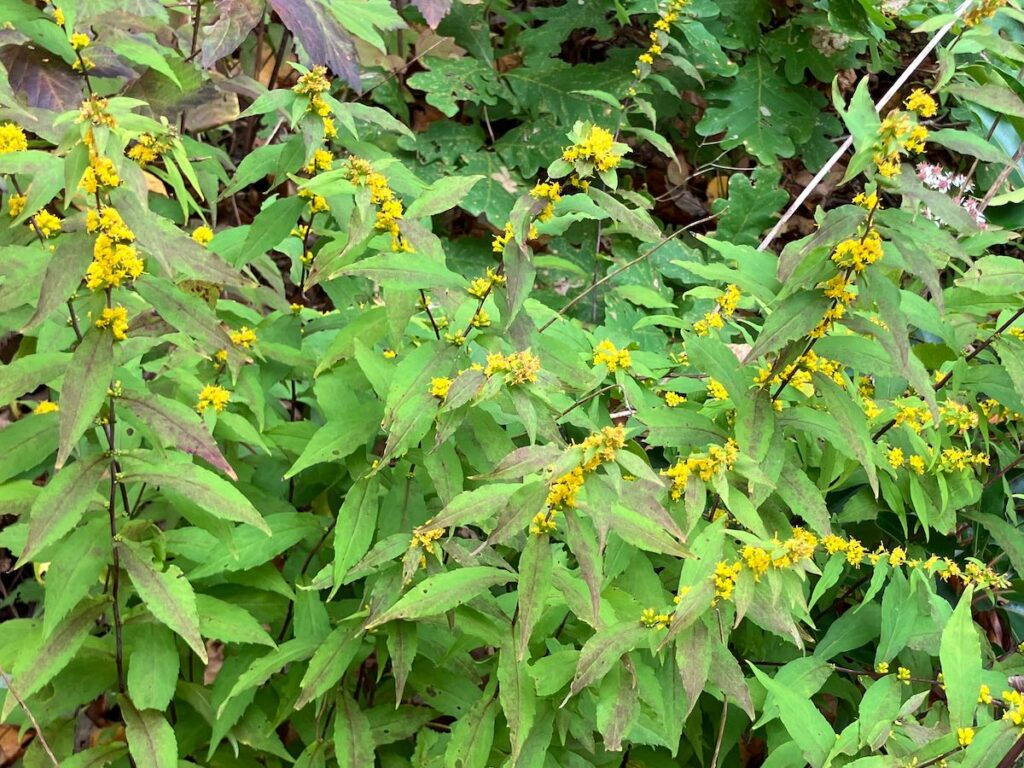
Solidago caesia: Blue-stemmed Goldenrod
Blue-stemmed goldenrod takes the specie into the shade, featuring powdery purple stems, with bright golden blooms up and down. Give them just three hours of sun, and they’ll be happiest. Solidago caesia can be found in thin soils on rocky bluffs, and can take dry conditions. They are reasonably rabbit and deer-resistant, and bloom from late August into October.
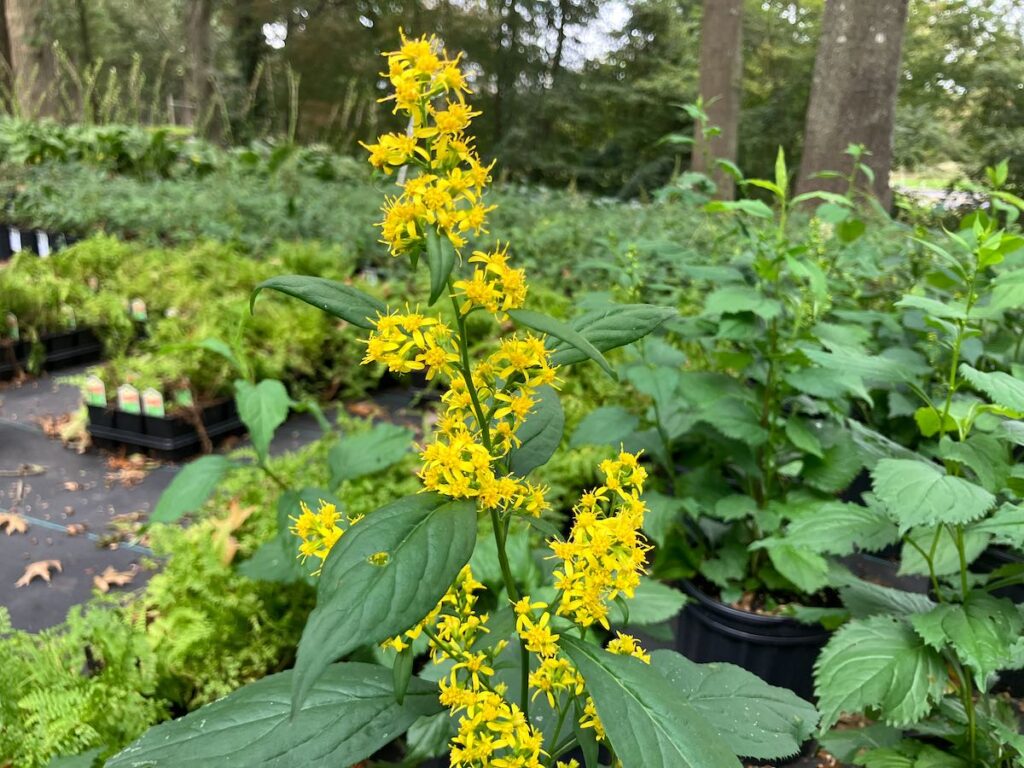
Solidago flexicaulis: Zigzag Goldenrod
Sporting both axillary (on the stem), and terminal (clustered at the tips) golden yellow blooms, and stems that zigzag between leaf nodes, Zigzag goldenrod also loves the part-shade garden. Plants prefer rich moist soils, and just a few hours of sun to achieve full 1-3’ in height and width. Their broad serrated foliage supports multiple Lepidoptera species.
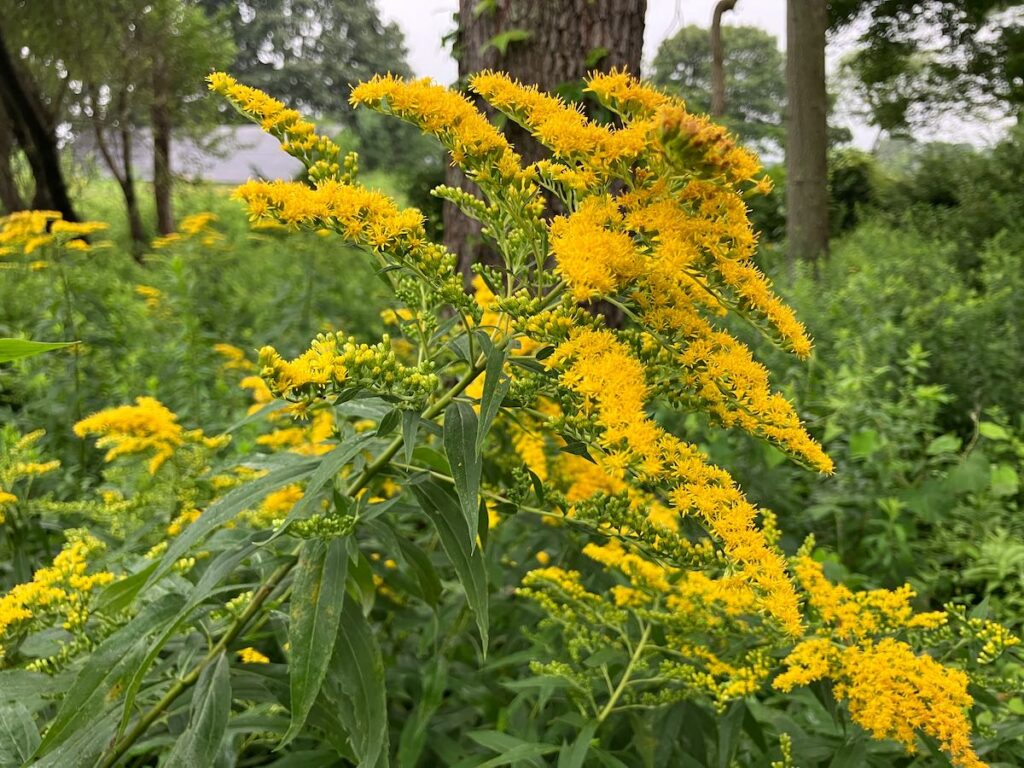
Solidago gigantea: Late Goldenrod
The common name ‘late goldenrod’ is a bit of a misnomer for our Wilder selection, found here on Griswold Point in Old Lyme, CT. Our robust plants shoot up to 5’ tall by midsummer on thick smooth stems, and produce giant 12” wide panicles of golden blooms beginning in late July. Late goldenrod enjoys sun to part shade, and a moist well drained site. Like most goldenrods, it spreads by underground rhizomes, so give it plenty of room!
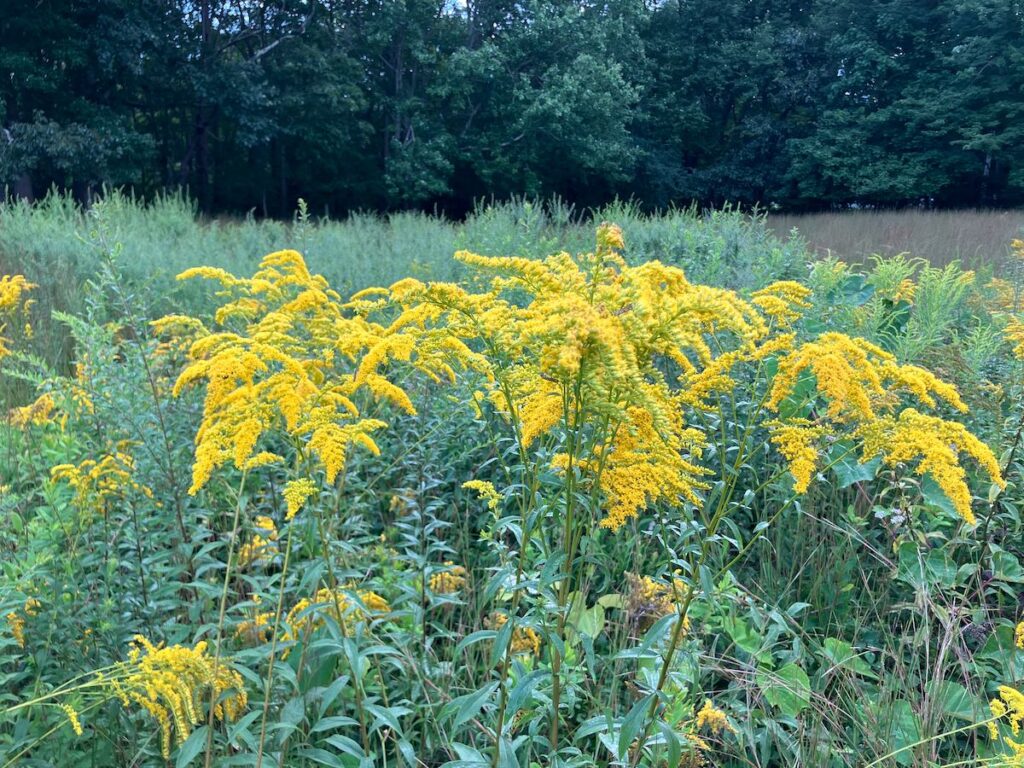
Solidago juncea: Early Goldenrod
First to bloom and last to release seed, early goldenrod sports whimsical ‘Truffula Tree’ mophead blooms on 3’ plants beginning in midsummer. They prefer full sun, and medium moisture, but can tolerate very dry conditions. In the fall, foliage goes a vibrant crimson red, and winter stems provide perfect perches for bluebirds and finches.
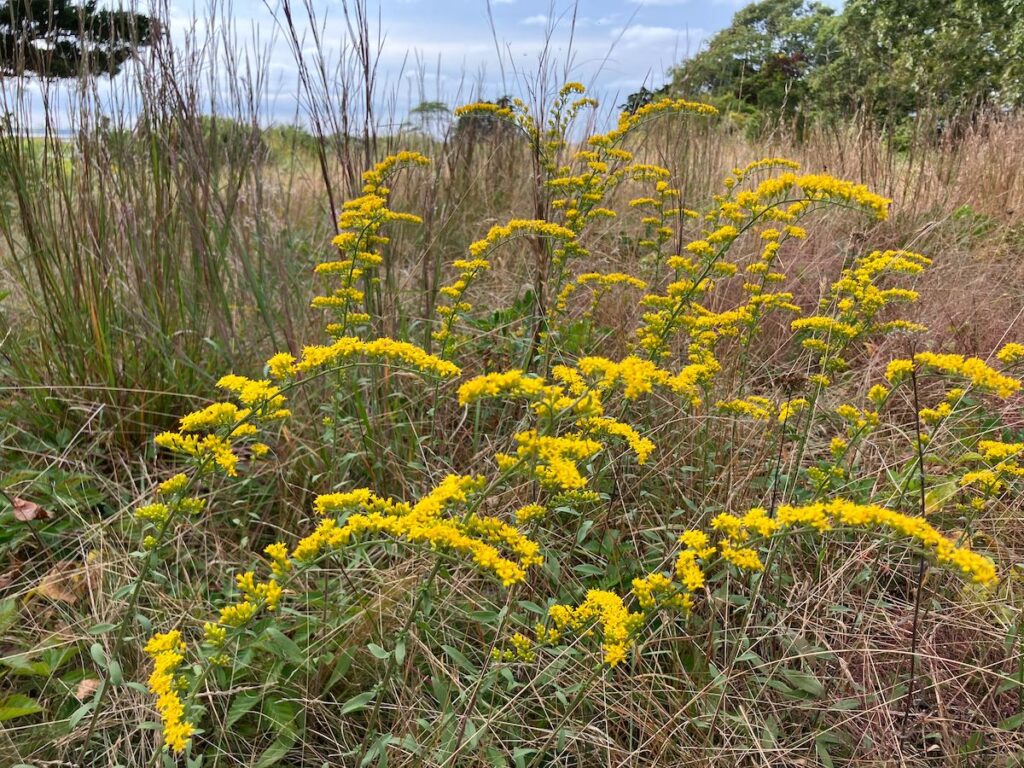
Solidago nemoralis: Old Field Goldenrod
Rarely seen in the trade, we first noticed this little gem poking up through an old brick patio in an abandoned roadside lot in Old Saybrook, CT. The restaurant was long gone, but the plants couldn’t have been happier, coming into bloom in full hot dry sun in September. The shortest of our collection, the dainty arching stems of old field goldenrod reach just 12” tall, making them a perfect choice for the front of the sunny native garden.
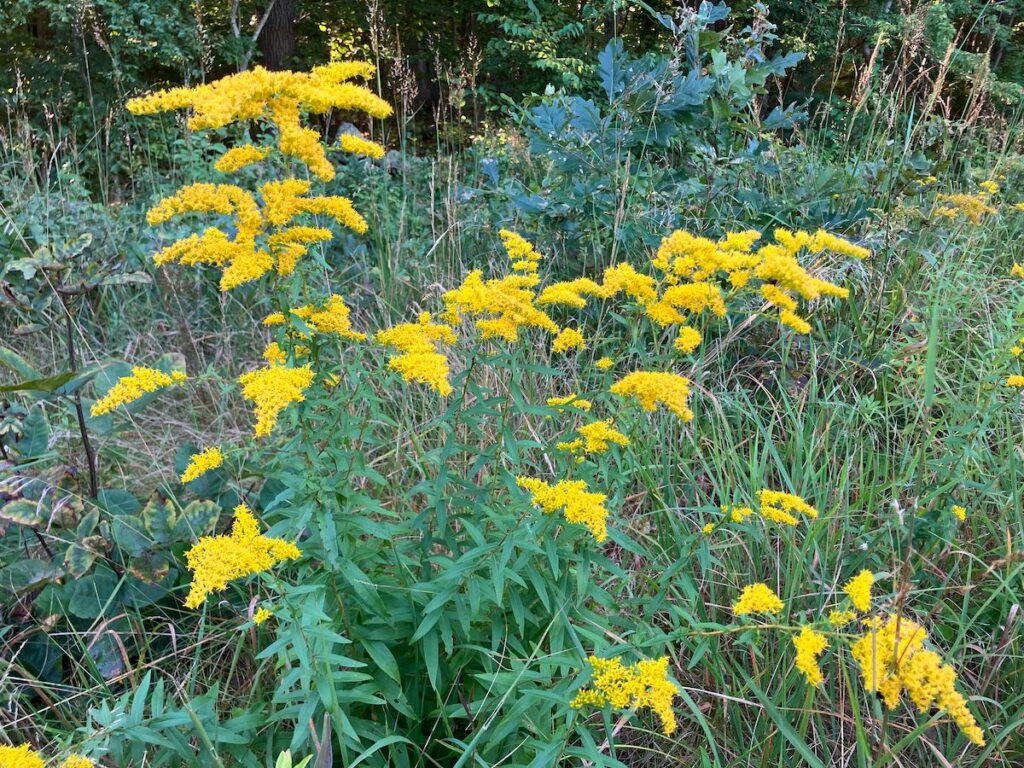
Solidago odora: Sweet Goldenrod
This one has it all. Glossy lanceolate rich green foliage on sturdy 3-4’ stems, with sweetly scented golden blooms in early fall. Indeed, both the leaves and blooms can be used to make tea! Sweet goldenrod loves full sun, prefers medium moisture, but can take even the driest of sandy sites. Pinch this one back in late June if you’d prefer a shorter, fuller fall presentation!
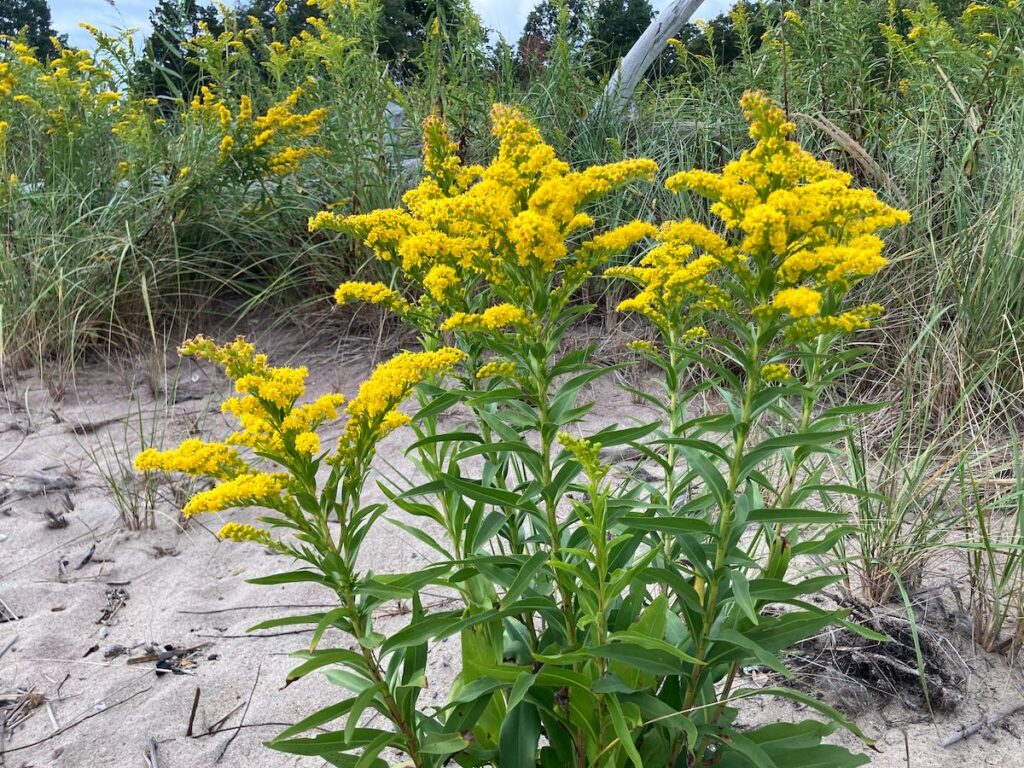
Solidago sempervirens: Seaside goldenrod
A testament to the versatility of the species, here’s a goldenrod that jumped out of the hayfield, and right onto the sand dunes! Seaside goldenrod reaches 2-4’ tall, has waxy bright green foliage, and is a staple nectar producer for bees and migrating monarchs in September and October. Oh, and you can see it happily colonizing the guardrails of the Mass Pike where it hitched a ride from down the Cape!
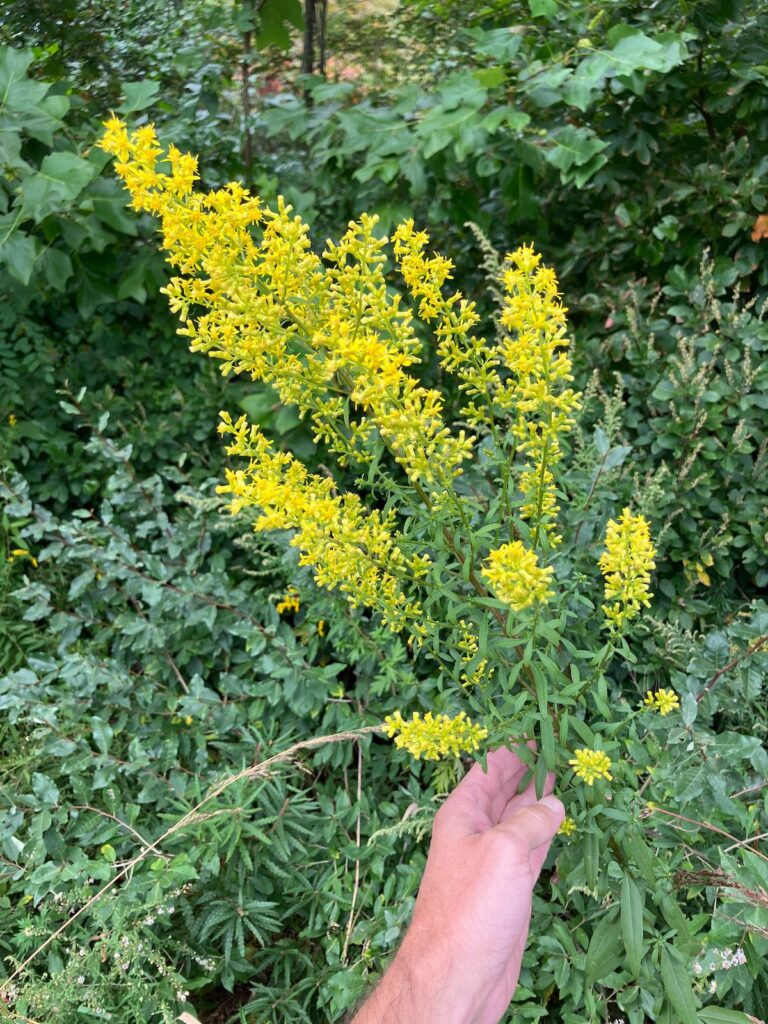
Solidago speciosa: Showy Goldenrod
Showy indeed! The 18” long golden inflorescences of this plant can dominate the early fall landscape, a true spectacle! Showy goldenrod grows to 3-5’ tall, and forms colorful colonies in sunny open spots. Leave the seedheads through the fall and winter for super winter interest and wildlife perches!
